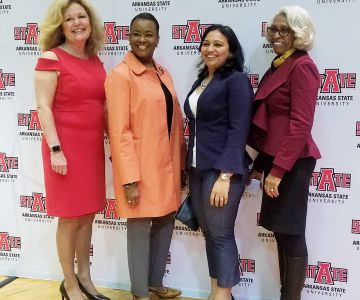If you are reading this, you have worked at one of the world’s largest occupations. I did, for years. By the most recent UNESCO figures, over 1.3 billion children and teenagers hold the job title currently. They are students in the world’s primary through secondary schools.
And now—at a time when we all hope to survive COVID-19 and return to life as usual—it is important that the process of educating these 1.3 billion should not simply return to “business as usual.” Stay-at-home orders have disrupted formal schooling systems globally. This creates opportunities to be disruptive for the long term.
Now is the time to reimagine how learning could be done. How can we keep the best elements of our current approaches, while making better use of the resources we have? These resources include millions of dedicated, caring teachers. They include technologies that are more powerful and widely available than ever.
And they include a resource often overlooked: the young people themselves. We can’t ignore the perspective of today’s young generations on a social system that affects them profoundly. With their help, we can create future approaches to education that are inclusive, equitable, and ultimately help today’s youth become future-ready learners.
The post you’re reading is my first of a series about the future of education. I will start by addressing a few fundamental questions, then look at how the pandemic is shaking things up in education—and could, in fact, bring young people to the forefront of change.
Why (and How) Does Education Need Reinventing?
Although education systems differ from country to country, their basic elements are much the same. Young learners gather daily in classrooms led by teachers, to learn various “subjects” in assigned time periods. They move through grade levels as they age; their progress is measured largely by written tests, and so forth. It would be unfair to say this system is utterly broken, as it has produced lots of happy, productive adults in many countries.
But if we look through the eyes of an entrepreneur—asking what could be, rather than settling for what is—we can see systems begging for improvement. Consider the United States system, which is full of inefficiencies and inequity. On each normal school day, vast amounts of time and money are spent busing students to and from large, centralized schools, at times that often don’t match their parents’ work schedules. Inside the classrooms, teachers struggle to balance attention among students who learn at different paces, with varying degrees of interest.
Inequities are pervasive. Students in wealthier families and districts have better-resourced schools and do much better in school, on average than those in poorer settings. Efforts to close the gap have helped in some respects, but not substantially or consistently. At the end of the K-12 path, the wealthiest students are increasingly likely to get into the nation’s highest-ranked universities, where they also can graduate without being crushed by student debt. All of this contributes to the erosion of socioeconomic mobility in the U.S.—and, it means that millions of young people miss the chance to develop their full potential.
The U.S. system also abounds with unresolved dilemmas. For example, there is a growing reliance on standardized testing, and on teaching to the test, while advocates of “authentic assessment” have long argued that these tests don’t measure the skills actually needed in work and life. Which, in turn, leads to an overarching issue.
What Do Young People Really Need to Learn?
If we try to make education relevant to today’s world, we are doomed to be always behind the curve, because the world keeps changing. One leading educator in the U.S. is Lynn Pasquerella, president of the Association of American Colleges and Universities. A recent article from a major professional group—the Society for Human Resource Management—quoted Dr. Pasquerella as follows:
“We have jobs now that didn’t exist 10 years ago and jobs 10 years ago that almost don’t exist anymore,” she said. “How do we prepare students for the work of the future when it’s a future that none of us can fully predict? The best thing we can offer students is how to be flexible in the face of change … and how to grapple with problems for which we don’t yet have answers. …”
Lynn Pasquerella, President, Association of American Colleges and Universities
Other sources echo these views while adding further insights and details. Numerous surveys have found business managers unhappy with the work-readiness of current graduates (including college graduates). The managers call for more learning of “soft” or human skills that can’t be replaced by computers and machines, such as creative problem solving and interpersonal skills.
Education innovator Colin Seale, writing on Forbes.com, said he speaks with many educators who wish they could shift from mass-production-style teaching to a more individualized approach. Seale’s optimum solution would be “giving every child their own independent learning goals and equipping them [with] the tools and resources they need to meet these goals.” Greater integration of fragmented subject matter would be useful, too. A high school student on Quora stated the problem eloquently when she complained: “They are preparing us for a mathematical future, a scientific future, a literary future, a geographic and historian future. Not for real life.”
In the world of work, the ability to reinvent how work is done has become valued in itself. When management scholar Annika Steiber surveyed hiring practices at fast-moving firms in Silicon Valley, she was told that along with technical skills, the companies look for people who will “challenge the status quo.” A leader at one company said: “The key is to have a team that does not accept current standards but asks, ‘If we were to start from scratch, what would we do then?’”
Clearly young people should learn a certain amount of prescribed content. The 3 Rs are still essential skills. Coping with the world in any sense requires awareness of facts and principles by which physical and human systems operate. But as the education researcher Sugata Mitra pointed out in “The Future of Schooling,” everyone’s situation is fluid, and therefore: “It is not important for learners to ‘know’ everything. It is important for learners to be able to find out what and how to know—effectively and in the shortest possible time.”
Dr. Mitra is renowned for his work with self-organized learning environments, or SOLEs, in which he finds that groups of children on their own can learn a great deal if provided with computer/Internet technology and minimal supervision. And this brings us to conditions under the current pandemic.
Today’s Crisis—And How It Puts Young People at the Fore
Physical schools are closed in many places. Students are mostly confined to their homes, where they are learning—and connecting with each other—online. Is this a “self-organized learning environment” writ large, on a global scale? Could it be the future shape of education?
Most experts say probably not. They see future trends pointing to “blended” systems that mix online with physical, offline learning. But more than ever, students are learning (they must learn) to be self-directed. More than ever, they must take the initiative to supervise themselves and reach out to parents, teachers, peers, or online resources for the academic help they need.
Furthermore, the pandemic itself creates real-world learning opportunities. Students, along with their families, are placed amid an unfamiliar and threatening crisis that they must learn to deal with practically. Many are seeing, for the first time and quite vividly, how their own lives are connected with seemingly remote news events and public policies.
Are young people likely to emerge from this crisis wiser and more socially motivated than before? We should think so and must hope so. Their voices will be needed in the long period of readjustment that lies ahead.
Around the world, countless lessons are being learned about how education might be done differently—and better. It’s too early (and too much is going on) to try to summarize them here. Future posts will touch on some key highlights. What can be said now is this:
Once the pandemic dies down, and conventional schooling is able to start again, there will be tremendous pressures to ignore or forget the useful innovations that have emerged during the crisis. Everyone will revel in a return to familiar patterns of life. Regulations and credentialing systems in all countries, which tend to lock the current education system in place, will still be in force. It will take organized, sustained movements to bring about the changes that ought to happen.
And young people can lead. They’ve been doing it already, on many issues of public concern. Teenage survivors of the school shooting in Parkland, Florida organized March for Our Lives, an ongoing movement across the U.S. to prevent gun violence and raise youth participation in politics. Greta Thunberg, starting at age 15, sparked a global wave of movements for action on climate change.
Now is the chance for the younger generation to organize and lead on an issue they know far more intimately than politics or climate science. Learning is what they do. They can tell what works and what doesn’t. By the end of the current crisis, they will have had a crash course in new approaches and ideas. If it is permissible to paraphrase Marx and Engels, I would close for now with this message to today’s youth: Students of the world, unite! You have nothing to lose but the inefficiencies of the past.



